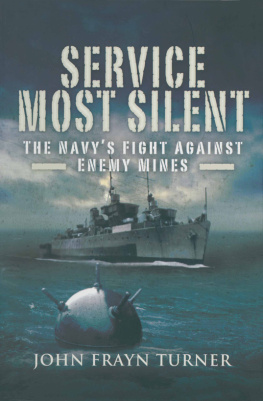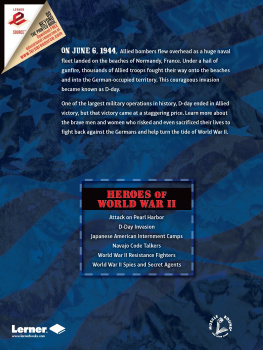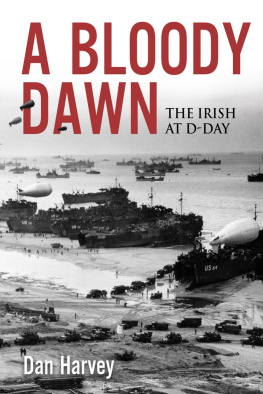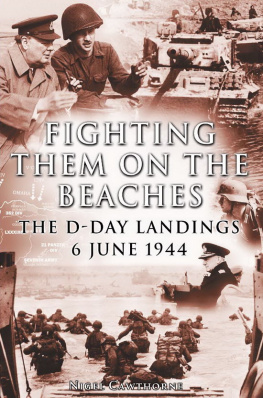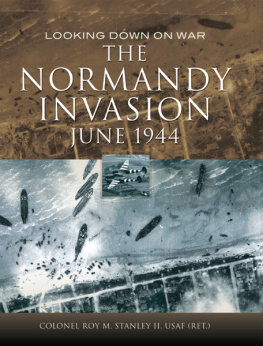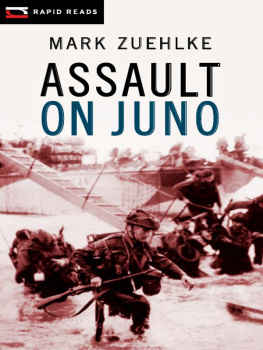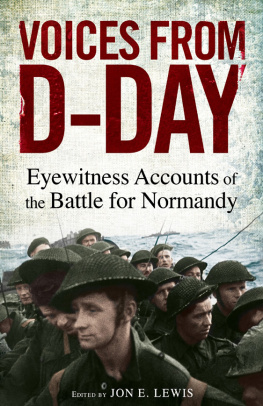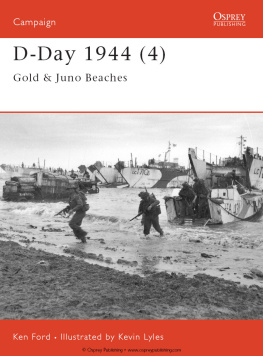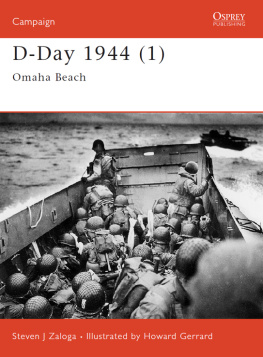INVASION
Also by John Frayn Turner
and available from Pen & Sword Books:
Heroic Flights
VCs of the Second World War
The Life & Selected Works of Rupert Brooke
Awards of the George Cross 19402009
The Bader Wing
Service Most Silent
Periscope Patrol
Douglas Bader: The Biography
The Battle of Britain
The WAAF at War
Fight for the Sea
Fight for the Air*
British Aircraft of the Second World War**
* Available June 2014
** Available November 2014
INVASION
THE FULL STORY OF D-DAY
JOHN FRAYN TURNER
First published in Great Britain in 1959 by George G. Harrap
Reprinted in this format in 2014 by
PEN & SWORD MILITARY
An imprint of
Pen & Sword Books Ltd
47 Church Street
Barnsley, South Yorkshire
S70 2AS
Copyright John Frayn Turner, 1959, 2014
ISBN 978 1 78159 270 0
The right of John Frayn Turner to be identified as Author
of this work has been asserted by him in accordance with the
Copyright, Designs and Patents Act 1988.
A CIP catalogue record for this book is
available from the British Library
All rights reserved. No part of this book may be reproduced or
transmitted in any form or by any means, electronic or mechanical
including photocopying, recording or by any information storage and
retrieval system, without permission from the Publisher in writing.
Printed and bound in England
By CPI Group (UK) Ltd, Croydon, CR0 4YY
Pen & Sword Books Ltd incorporates the Imprints of Aviation, Atlas,
Family History, Fiction, Maritime, Military, Discovery, Politics, History,
Archaeology, Select, Wharncliffe Local History, Wharncliffe True Crime,
Military Classics, Wharncliffe Transport, Leo Cooper, The Praetorian Press,
Remember When, Seaforth Publishing and Frontline Publishing
For a complete list of Pen & Sword titles please contact
PEN & SWORD BOOKS LIMITED
47 Church Street, Barnsley, South Yorkshire, S70 2AS, England
E-mail: enquiries@pen-and-words.co.uk
Website: www.pen-and-sword.co.uk
Preface
S O many component parts were needed to stage the greatest invasion the world has known that the historian would find it virtually impossible to present a picture of D-Day, and those fateful few days that followed, but for the invaluable evidence that has been presented by contemporary writers who have specialized in the parts played by the various units involved.
I gratefully acknowledge the help that I have received from reading a wide selection of the many fine books which present specific aspects of the invasion, and in particular I am extremely grateful for permission to refer to such accounts in the following books:
Above Us the Waves, by C. E. T. Warren and James Benson (Harrap), for the vital piloting task of the two midget submarines; The Frogmen, by T. J. Waldron and James Gleason (Evans), for the selfless work of the men who tackled beach obstacles; The Last Passage, by J. E. Taylor (Allen and Unwin), for the poignant tale of the old blockships; The Marines were There, by Sir Robert Bruce Lockhart (Putnam), for the part played by the Commandos; The Red Beret, by Hilary St George Saunders (Michael Joseph), for the airborne assault; The Second World War, Volume V, by Winston S. Churchill (Cassell), from which I have quoted the memorandum on piers, with a comment by the author; The Secret War (193945), by Gerald Pawle (Harrap), for information about certain inventions; The Struggle for Europe, by Chester Wilmot (Collins), for facts in the overall pattern; This was D-Day, by Cliff Bowering (the Canadian Legionary), an eye-witness impression by a Canadian soldier; also, for general information, Air Operations by the Allied Expeditionary Air Forces in North-West Europe (the London Gazette); The Assault Phase of the Normandy Landings (the London Gazette); Crusade in Europe, by Dwight D. Eisenhower (Heinemann); Invasion, by John St John Cooper (Daily Express Publications); Normandy to the Baltic, by Field-Marshal the Viscount Montgomery of Alamein (Hutchinson); Omaha Beachhead (United States War Department, Historical Division); Utah Beach to Cherbourg (United States War Department, Historical Division).
I am also indebted for their help to the Reference and Photographic Librarians of the Imperial War Museum, and to my friend, Commander John G. D. Ouvry, D.S.O., R.N.
Contents
Illustrations
Maps
A S the great German juggernaut thundered through the Low Countries in mid-May 1940, within a week the British Expeditionary Force was in drastic danger. An emergency meeting at the War Office on May 19 considered as a temporary measure maintaining it through Dunkirk, Calais, and Boulogne, and as an alarming alternative, partial or total evacuation via the same three places. The need for evacuation was still thought to be unlikely. Whether we were to stay or leave, however, naval command was to be controlled direct from Dover by Vice-Admiral Bertram Ramsay.1
During the next two days conditions on the Continent grew worse each hour, and on May 21 the War Office were considering emergency evacuation of very large forces. Throughout the week the now-immortal small ships and smaller-still boats assembled around the Kent coast, while over in Belgium four divisions of the B.E.F. were in imminent danger of encirclement near Lille.
Then, at 10 P.M. on Sunday, May 26, exactly one week after the War Office had thought evacuation unlikely, Ramsay received the order to implement Operation Dynamo. The most expected from this was to save 45,000 men in an estimated two days left before the enemy would reach the coast: one man in eight of the B.E.F.
But for some reason, the German tanks headed away from the retreating British troops, giving them an extra week before the all-out attack.
The result was Dunkirk.
At this moment of memorable defeat one man typified the will to win, which was expressed four years later on the day of deliverance. His name, of course: Bertram Ramsay. How right that Ramsay, the saviour of the B.E.F., should carry the Allies back into France on D-Day.
Although so much must happen before this could come to pass, the very night after France signed a separate armistice with Germany on June 22, 1940, British troops stepped ashore again on French soil. True, this was only a reconnaissance raid near Boulogne by 120 Commandos, but it was a beginning, nevertheless. The number was to have been 200, but boats of a suitable kind could not be founddespite the fact that less than a month earlier one-third of a million men had been snatched from the smoke and death of Dunkirk.
The raid provided little intelligence, and one group mistook their port of return in Englandto be promptly arrested as deserters by the ever-vigilant British military police!
D-Day was still nearly four years off. But during July Mr Churchill set up a Combined Operations Command to conduct regular small raids on enemy coasts. Then, in October, he instructed the Joint Planning Staff to study the whole question of an offensive in Europe, even mentioning a bridgehead on the Cherbourg peninsula. This was essentially a period of preliminary planning, for, with the Luftwaffe still strong and active over England, the possibility of a German invasion could not yet be completely ignored. We could only look ahead to a time when we should have equal or superior land and air power, and try to keep the Atlantic open for supplies. For, as Admiral Raeder rightly said on December 27, 1940, Britains ability to maintain her supply lines is definitely the decisive factor for the outcome of the War.




